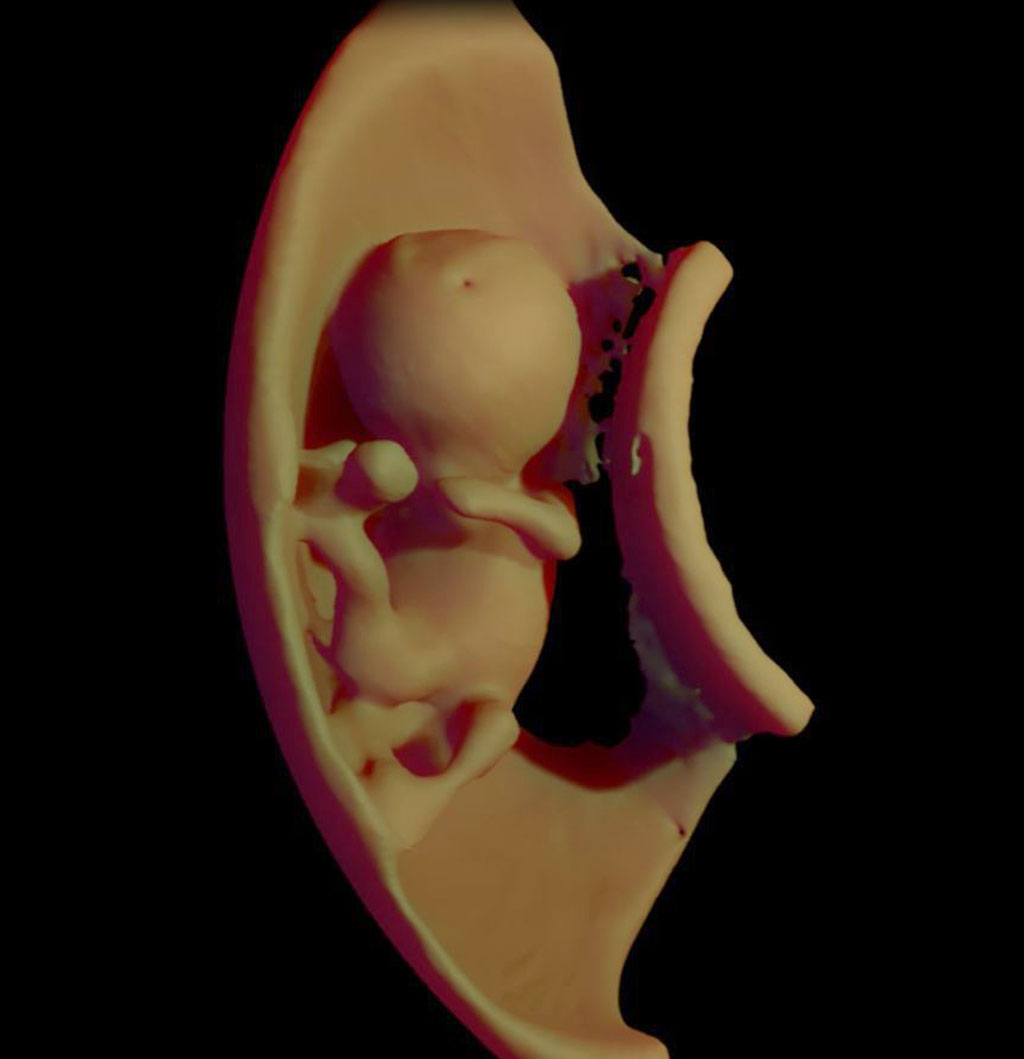Radiology Studies Provide Insight on Zika Effects
By Daniel Beris
Posted on 09 Dec 2016
Three now studies use computerized tomography (CT), ultrasound, and magnetic resonance imaging (MRI) to assess the impacts of Zika virus.Posted on 09 Dec 2016
The first study examines CT findings of the central nervous system (CNS) in 16 newborn babies with congenital Zika virus infection confirmed by tests in cerebral spinal fluid (CSF). The researchers, from Barão de Lucena Hospital (Recife, Brazil), identified a recognizable pattern of decreased brain volume, simplified gyral pattern, calcifications, ventricular dilatation, and prominent occipital bone in the CT images.

Image: A 3D virtual model ultrasound view of fetus at 12 weeks (photo courtesy of Heron Werner/CDPI).
The second study, by researchers at Federal Fluminense University (Niterói, Brazil) analyzed the imaging results of three target groups affected by Zika: adults who developed acute neurological syndrome, newborns with vertical infection with neurological disorders, and pregnant women with rash outbreaks suggestive of Zika. They found common MRI findings that included enhancement of certain spinal and facial nerves. In the newborns, MRI showed orbital injuries and anatomical changes in brain tissue.
The third study, conducted at Clínica de Diagnóstico por Imagem (CDPI; Rio de Janeiro, Brazil), used ultrasound and fetal MRI performed on pregnant patients with Zika virus at different gestational ages. Once the babies were born, they underwent ultrasound, CT and MRI. The researchers then created three-dimensional (3D) virtual and physical models of the skulls. They found that more than half the babies had microcephaly, brain calcifications, and loss of brain tissue volume, along with other structural changes. All studies were presented at the RSNA annual conference, held during November 2016 in Chicago (IL, USA).
“The emergence of Zika virus in the Americas has coincided with increased reports of babies born with microcephaly,” said study author Heron Werner Jr., MD, PhD, of the CDPI department of radiology. “An early diagnosis may help in treating these babies after birth. Moreover, the knowledge of abnormalities present in the central nervous system may give hints about the pathophysiology of the disease.”
Zika virus is a member of the Flaviviridae family, and is transmitted by the daytime-active Aedes mosquitoes; in humans, the virus causes a mild illness known as Zika fever. Zika outbreak was first reported in Brazil in May 2015, and since then local health authorities estimate that around a million suspected cases have occurred. Brazilian health authorities also observed a significant increase in the number of detected cases of microcephaly and Guillain-Barré Syndrome affecting fetuses and newborns.
Related Links:
Barão de Lucena Hospital
Federal Fluminense University
Clínica de Diagnóstico por Imagem














